Ockbrook - Part 03
- The Moravian Settlement
w/e 29 February
2004
In this and
the next part of our tour around Ockbrook we shall be taking
a closer look at some of the buildings in the Moravian Settlement
together with a little of the history of the area. For a closer
look at the panoramic view below, click on the image to open
a new window showing a larger version - 144kb.

In this part we start with the buildings on the left and work
our way towards the right.
|
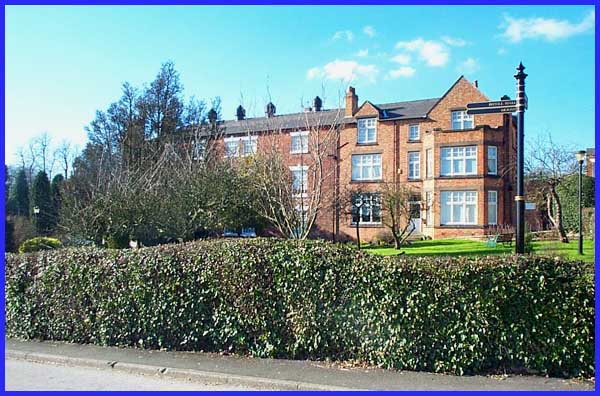
The building on the left
of this view originated as a boys' boarding school in 1822 with
the headmaster's house on the right being added in 1907. Closing
in 1915, the boys and their masters transferred to another Moravian
School in Yorkshire but girls and their teachers moved in the
very next day. There have been many extensions and additions
since and now the old headmaster's house is the school's administrative
block. The school is attended by some 450 pupils, mainly girls
although the the primary department (3-11) does admit some boys.
The school still caters for a small number of boarders.
|
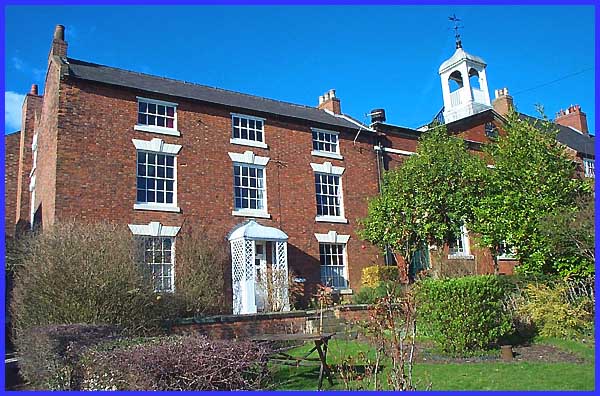
This is The Manse and it
is perhaps an opportune moment to relate how the Moravian Church
first came to Ockbrook. A Bohemian Christian reformer by the
name of Jon Hus was burned at the stake in 1415 and his followers
founded their church in Moravia, now part of the Czech Republic,
in 1457. An Anglican curate, Jacob Rogers was influenced by the
Moravians and preached in Nottingham about 1740. He was heard
and invited to Ockbrook by Isaac Frearson, a local farmer and
this led to a "society" being formed in the village.
The society was the forerunner of the congregation that was "settled"
by Bishop Peter Boehler some ten years later with the church
being built on the hill to the north of the original village
in 1752. Middle class and wealthy people attracted to the village
built many large houses and cottage industries developed with
glovemakers, shoemakers and tailors becoming established. One
such person was Mrs Elizabeth Bates who financed many of the
buildings in the 1810s and 1820s leaving the building shown above
in her Will to the congregation for the use of the minister.
|
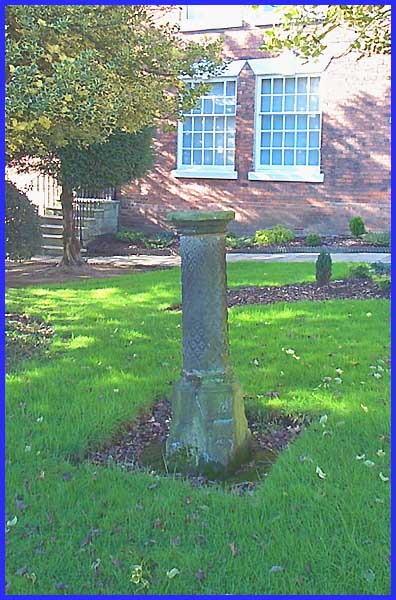
The whole of The Settlement is now protected
by a Conservation Order and several of the buildings, including
the Manse, are Grade II listed. In the front garden are the remains
of a sundial which is reputedly of Saxon origin and from the
Abbey at Dale. Today, standing in the shadows of nearby trees,
its purpose is largely decorative as its usefulness is somewhat
limited.
|

Another sundial stands in front of the Moravian
Chapel and although it gives an accurate time reading, the chapel
clock made by Whitehurst and Son of Derby is probably easier
to see. It bears the date 1827. Construction of the chapel started
in 1751 and the roof was raised in less than two months, the
chapel being consecrated by Bishop Peter Boehler on April 5th
in 1752.
|
Whilst preparing these Ockbrook
pages, one or two discrepancies in my original source of information
have become apparent but when taking the images for this page
we met the Minister who very kindly unlocked the doors giving
us access to the chapel. He also pointed out "A Guide to
a Walking Tour" on sale for the very reasonable price of
just £1.00 that included much of the information included
here.
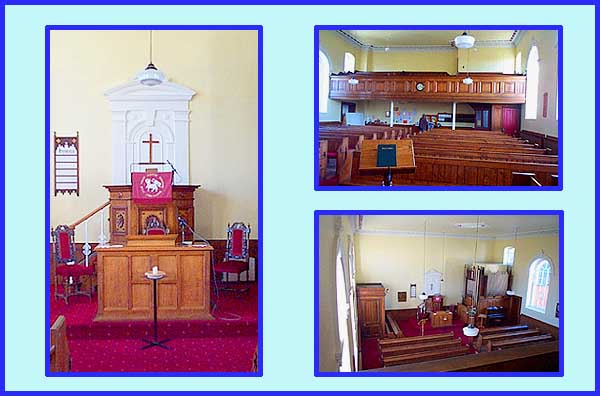
This series of images of the chapel
interior demonstrate the simple style that is common to the Moravian
Church. Originally the pulpit was on the west wall and the pews
ran in a north-south direction with men and women entering by
separate doors and sitting separately too. There was a gallery
and musicians's loft at each end of the chapel. Several extensions
and modernisations resulted in only the northern gallery remaining
today (top right) but enabled the Congregation to celebrate its
250th anniversary in 2000.
|
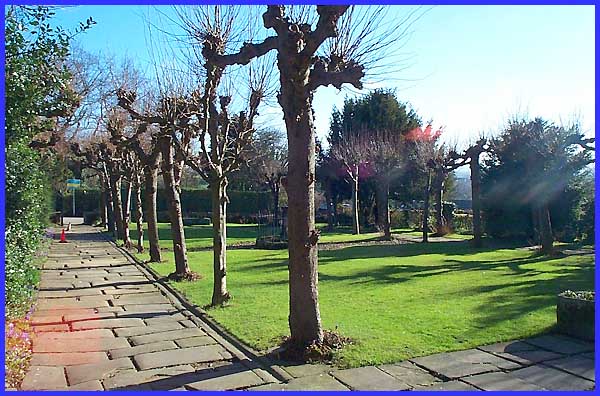
Returning to the outside of the chapel,
we can pause for a moment on the chapel path which is known as
"The Bishops' Walk". The flagstones are another link
to Dale having been brought form the cloisters there.
|

